Lighting in 2020: Home Is Where the Studio Is
Despite a few production hiccups, vendors are keeping the supply lines full
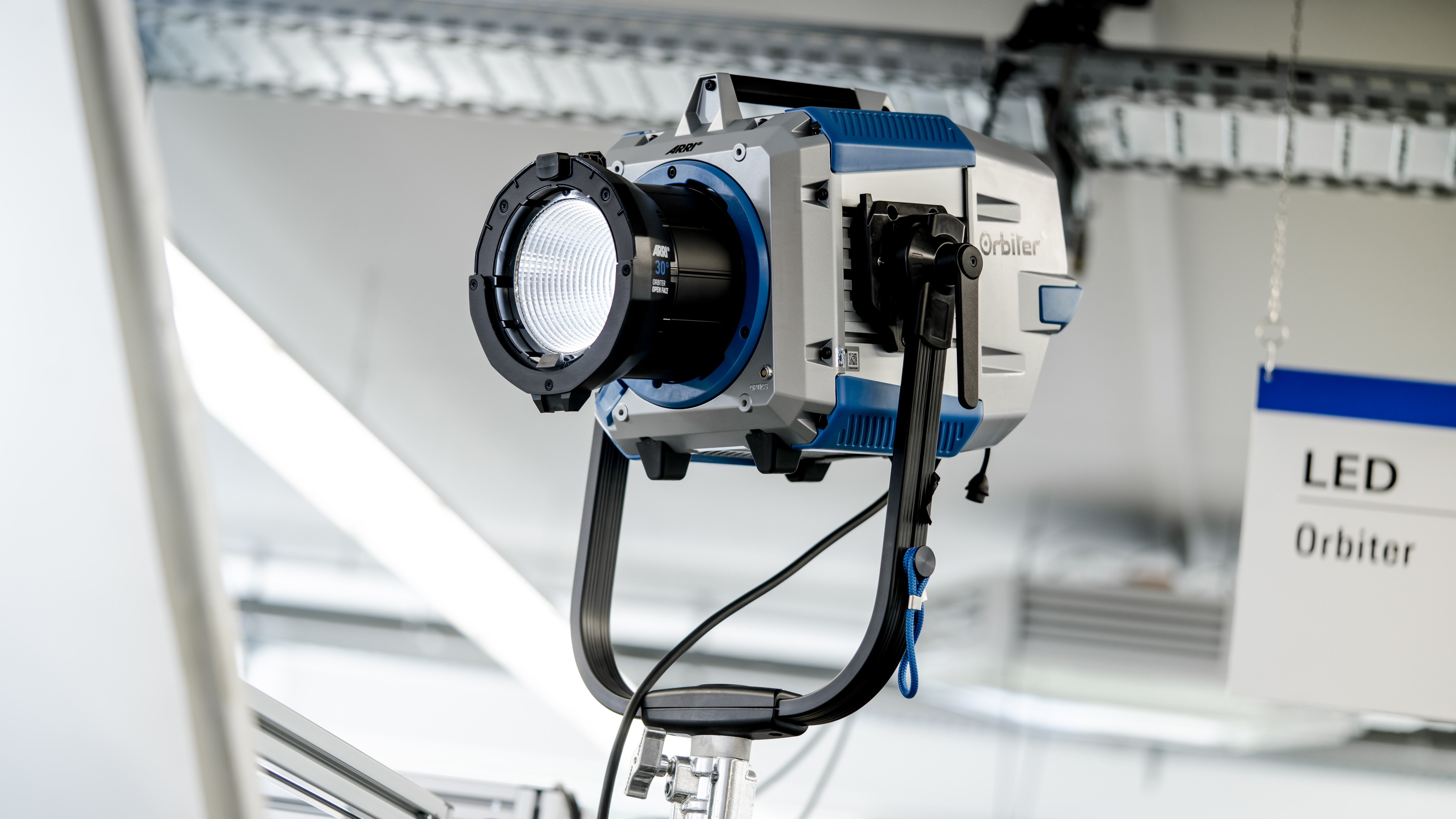
SEATTLE—COVID 19 upset the market for lighting equipment, the same as it did for other broadcast and motion picture gear. But though vendors were unable to push their new offerings in-person at trade shows and traveling road shows, they have been able to introduce products already in the pipeline.
Although the emphasis in recent months has been on remote production—which in the early days of the pandemic forced a number of stations to bypass their studios—the market for studio lighting is still expected to be healthy as broadcasters return to their facilities. Nevertheless, with the lines starting to blur between what defines lighting for studios and remote production, vendors are also stepping up their efforts to add features for IP-based remote control for the professional facility as well as for those broadcasters still working from home.
SET UP AND LEAVE
Last month, ARRI announced that its new Orbiter, a single-point source, six-color light engine, will be shipping soon. The new light is “very versatile,” according to ARRI systems engineer Patrick Schulze.
“The Quick Lighting Mount [QLM] in Orbiter allows for optics with vastly different properties to be connected to the fixture,” he said. “These include open face, 15, 25 and 35 degree projection lenses, fabric sphere for omnidirectional light and softboxes.”
Orbiter features ARRI’s new Lighting Operating System (LiOS) programmed into the fixtures. LiOS includes features from ARRI’s Skypanel and other lights.
Schulze added, “We’ve been working on ways to control fixtures remotely through the internet. Our Skypanel series and Orbiter have a lot of IT-based technology in them. Basically they’re computers that put out light.”
Schulze says COVID-19 has really driven development for new features for its fixtures.
The professional video industry's #1 source for news, trends and product and tech information. Sign up below.
“All of our new lights are going to be IP-controllable,” he said. “They’ll have DMX control, local control, but we’re really working more toward IP connectivity.” In the pandemic workflow television production and motion picture studios are forced to work under, “you can’t have 12 people in the studio at once. The lighting people will set it up and then go somewhere else to control it.”
IN THE PIPELINE
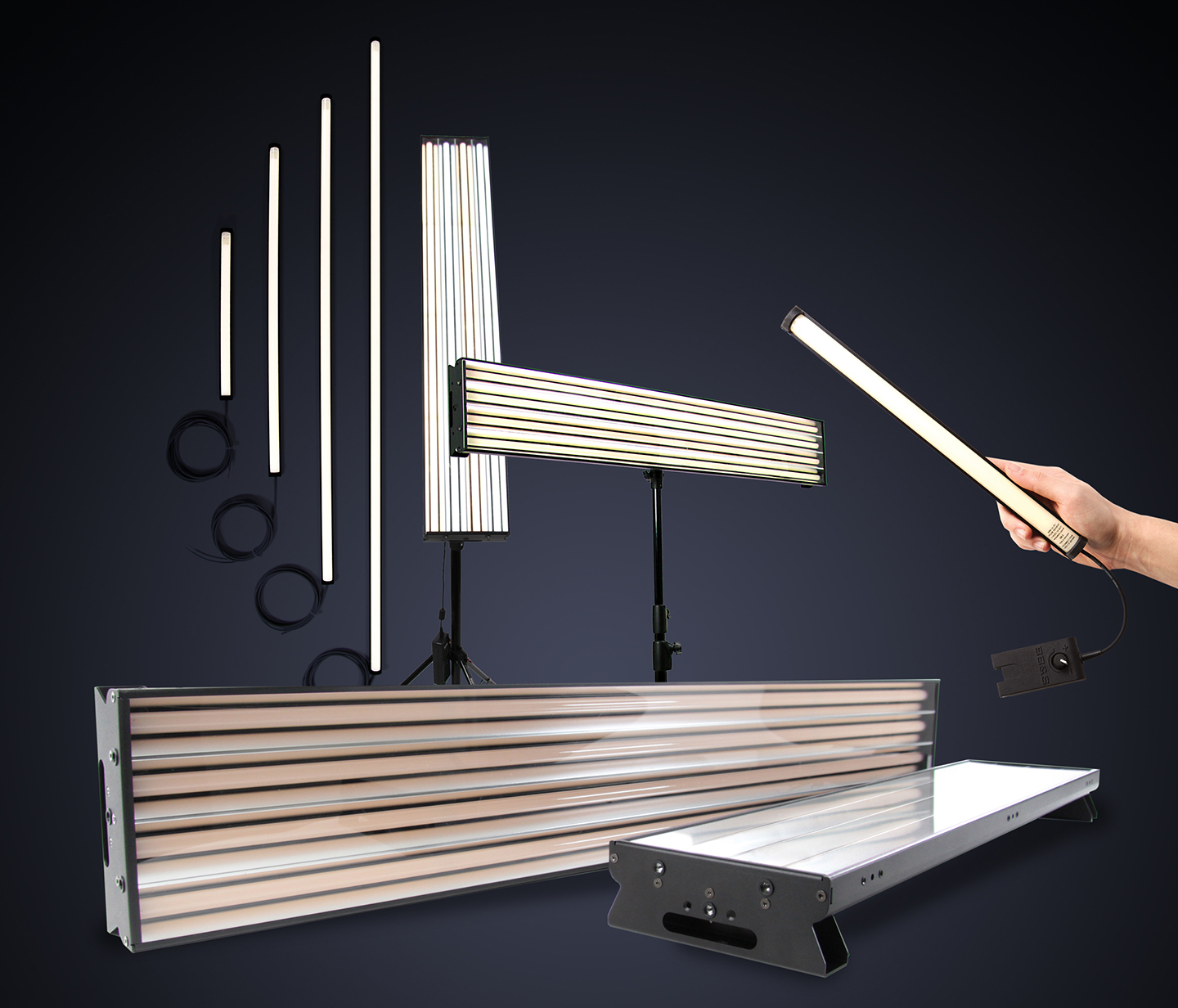
BB&S Lighting’s co-owner Tobi Sali said the company is finding a lot of customers for its Pipeline Reflect System lighting fixtures in studios that are putting in video walls.
“When people put in video walls, they have to go to daylight,” he said. “Then you get your true blacks out of it, and you get real good color separation. That gives you real usable wall. If you use tungsten, you don’t get good color separation.”
The original Pipelines were 1-inch diameter tubes that used remote phosphor technology to provide high-quality 95 TLCI color rendering, according to Sali.
“The Reflect Series is the Pipeline in a wedge with a special reflective aluminum material on both sides,” he said. “This allows a Reflect fixture to provide 150% the output of the original Pipeline for the same power draw.” The Reflects are available in 1-, 2-, 3-, 4-, 6- and 8-foot lengths, and a choice of 3200-degree K, 4300-degree K or 5600-degree K color temperatures.
When the anchor from home revolution hit the television industry, BB&S had a ready solution in its “Reporter Kit,” a ready-to-go two Pipeline arrangement complete with stands and a dimmer that had been developed for webcam correspondents.
A VARIETY OF USES
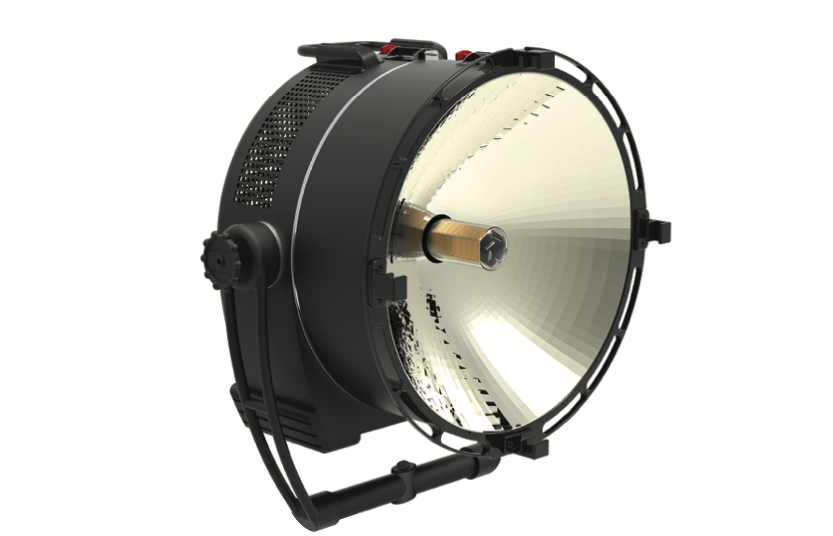
After virus-caused delays, Cineo Lighting has started delivering its R15 1500W hard LED lighting fixture, according to Rich Pierceall, vice president of operations for NBC Universal, parent company of Cineo.
“We’ve explored a lot of new and patented a lot of new technologies with the Reflex series, specifically with immersion cooling,” he said.
The R15 is a high-output, focusable-beam, fully dimmable hard light. The beam angle adjustment from 15 to 75 degrees is accomplished without mechanical movement, making it remotely adjustable. The reflector can be easily removed and replaced with a variety of soft accessories. A 500W R5 “little brother” is in the works.
Being part of NBC Universal has given Pierceall a perch with quite a view.
“There’s such a diversity of different productions going on, broadcast and streaming, and feature film, what new techniques are being considered to help production get underway,” he said. “And ‘virtual’ is top of mind for just about everybody.
“To be honest with you, we don’t see any dividing line between lighting and virtual lighting, between LED light sources and LED walls,” Pierceall added. “It’s all kind of one environment for us.”
COLOR TEMPERATURE
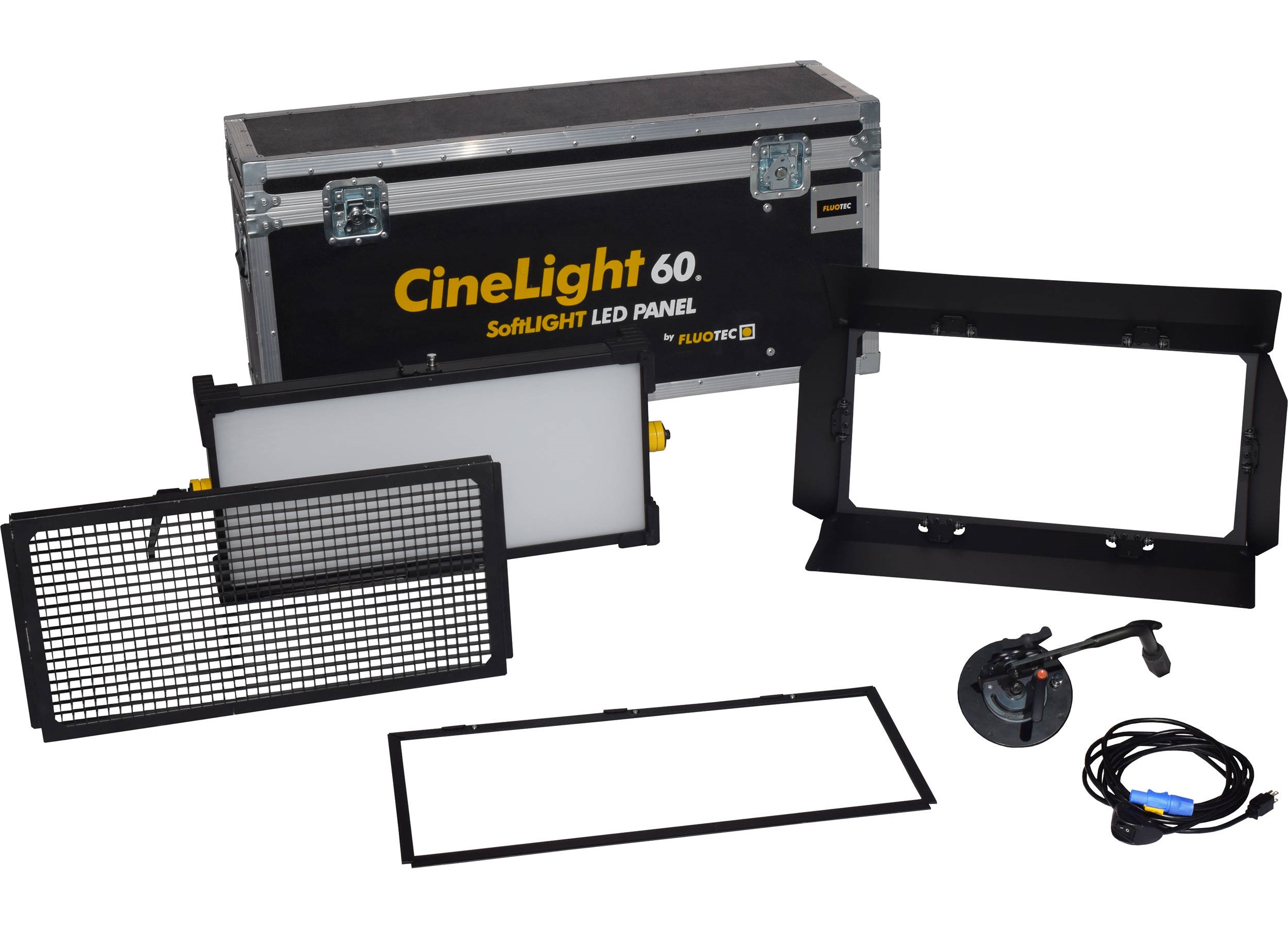
As far as color temperature is concerned, Ing. Jose Maria Noriega C.A.S, chief revenue and marketing officer at Fluotec in Laredo, Texas, said the studios they’re lighting are falling more or less equally between fixed daylight, fixed tungsten and tunable.
“Though there are customers who want the color temperature tunable feature for their studio lighting, there are studios around the United States that are specifically designed for either tungsten or daylight,” he said. “We have sold thousands of daylight fixtures, and thousands of tungsten.”
Noriega adds that they’re finding a lot of demand for sky lighting, as well.
“We have met that demand with the CineLight line,” he said. “That’s the kind of light they need to light the whole studio.”
But there’s still a healthy market for Fresnel fixtures. Fluotec’s Fresnels avoid color shift between the center and the edge of the beam utilizes the company’s NEBULA technology to emit powerful, high-quality, full-spectrum white light beams, according to Noriega.
TWO-WAY COMMUNICATION
Kino-Flo has just activated the RDM (remote device management) control communication protocol to enable two-way communication in their lighting fixtures.
“Existing DMX lighting control is one-way,” said Scott Stueckle, Kino-Flo sales manager. “DMX only allows sending instructions to the light, but you can’t see all the settings on the light. With RDM you have two-way communication between the fixture and the control board, which is important.
“With DMX, if you want to change a setting for, say, ‘special effects,’ you have to go to ‘special effects’ on the fixture and adjust the ‘special effects’ setting,” Stoeckle added. “But with RDM, through the control board you can just hit a button on the control board and change the menu setting to whatever you want. That’s really a big deal for board operators.”
The computer chip that runs RDM is built into existing Kino-Flo LED fixtures, but if you just turn it on, “chaos” could ensue, he said.
“So what we did was spend all this time reconfiguring all of our software so that when RDM did come out it’s very intuitive, user-friendly, and with as few bugs as possible. And it will work with our older software as well.”
MORE PUNCH
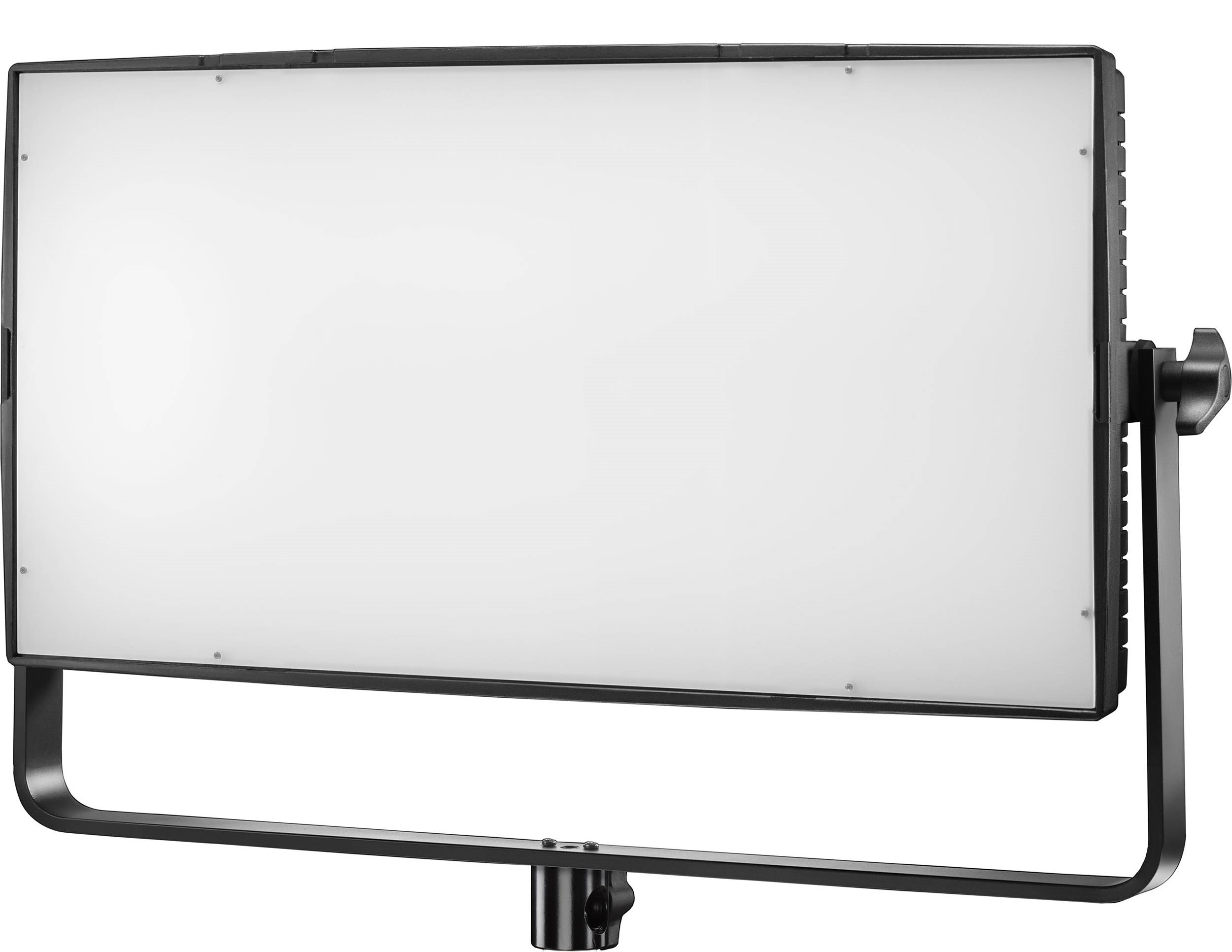
Pete Challenger, who manages U.S. business development for Italian light maker Lupo says he’s spoken with a number of customers who want a full color panel light that’s also got some “punch” to it. In response, last year Lupo launched the Superpanel Soft Full Color 60 RGBW LED Panel.
“Most panel lights have a kind of ‘soft, wraparound’ type of light output to them,” he said. “If you are needing to use the light particularly close in, it can be quite attractive. The problem with it is getting that level of softness with massive amounts of light.
“So what we’ve done with the Superpanel Full Color 60 is to put a lens over each cluster of LEDs,” he continued. “That gives you a powerful, color flat panel with a 40-degree beam angle.
“If the light is working close to the subject, the effect can be harsh unless diffusion is applied,” Challenger added. “But in most cases in a really big studio, you want some throw. And in that case, having more raw power to start with gives you more flexibility.”
